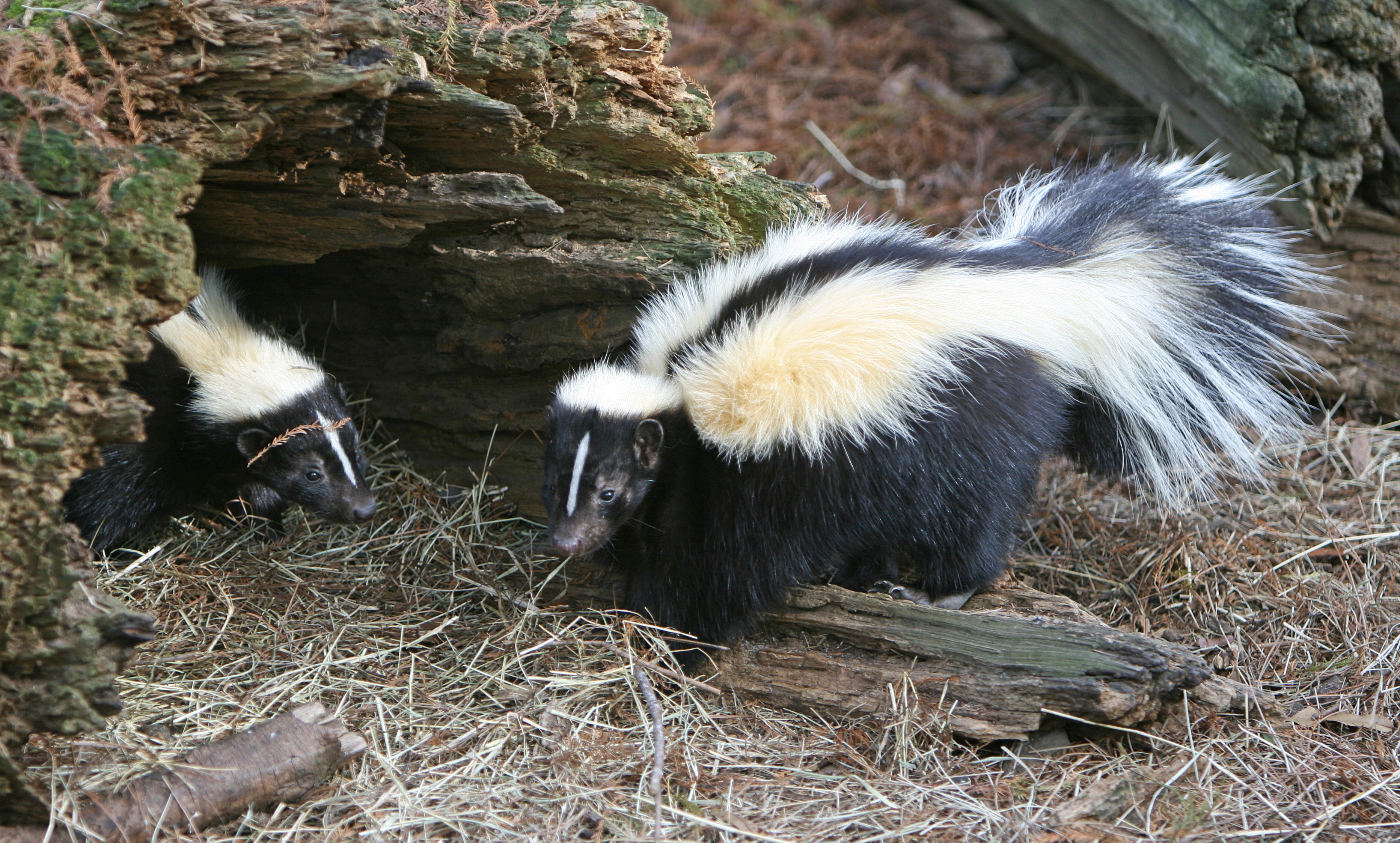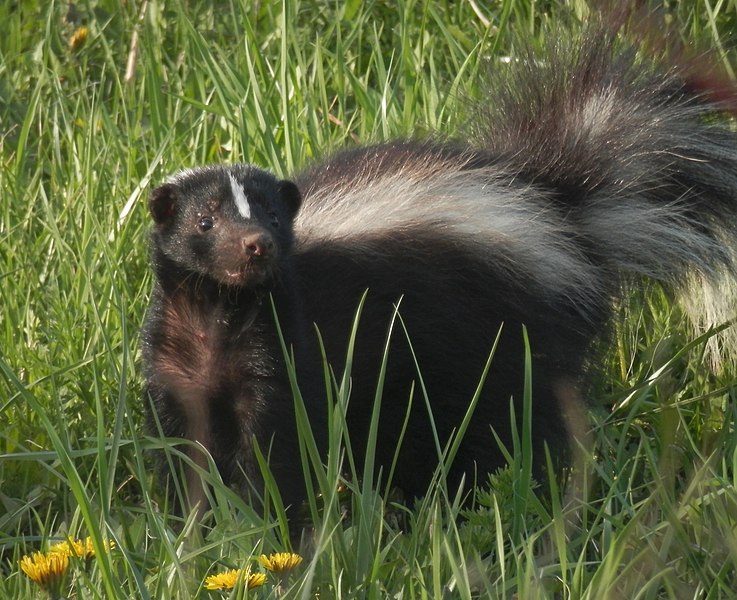Have you ever had one of those moments when you’re enjoying a peaceful evening in your backyard, only to catch a whiff of something…unpleasant? Yup, a skunk has made itself at home nearby. If you’ve found yourself in this stinky situation, don’t worry—you’re not alone, and there’s a way out without ending up smelling like a skunk yourself.
Trapping a skunk without getting sprayed might sound like a scene from a comedy movie, but with the right approach, it’s entirely doable. The key is understanding our furry black-and-white friends and employing a bit of strategy. Whether you’re a seasoned DIY enthusiast or just someone desperate to reclaim their yard, this guide from AAAC Wildlife Removal will walk you through the steps to safely and humanely trap a skunk. Ready to take back your space without the stench? Let’s dive in!
Key Takeaways
- Understand Skunk Behavior: Knowing how skunks act helps in trapping them without getting sprayed.
- Prepare Properly: Take time to gather necessary tools and information before attempting to trap a skunk.
- Follow a Step-by-Step Process: A detailed plan ensures safe and humane handling of skunks.
- Stay Calm and Move Slowly: Reduces the risk of startling the skunk and getting sprayed.
- Wear Protective Gear: Minimizes direct contact and potential risks during the trapping process.
- Take Preventive Measures: Helps keep your property skunk-free after relocation.
- Avoid Common Mistakes: Ensures safety and humane treatment of skunks.
- Adhere to Local Wildlife Regulations: Protects both you and the skunk legally and ethically.
- Be Patient and Persistent: Successfully reclaim your yard with time and effort.
- AAAC Wildlife Removal Support: Provides professional assistance and guidance throughout the process.

Understanding Skunk Behavior
Before you can successfully trap a skunk without getting sprayed, it’s essential to understand a bit about their behavior. Skunks are generally non-aggressive creatures, but they can spray as a defense mechanism when they feel threatened. Knowing how to read their body language and approach them cautiously can make all the difference.
First, it’s crucial to stay calm and move slowly around skunks. Quick movements and loud noises can startle them, increasing the likelihood of a spray. Skunks give warning signs before they spray: they might stomp their feet, hiss, and raise their tails. If you notice any of these behaviors, back away slowly and give the skunk some space.
By respecting these warning signs and understanding that skunks spray out of fear, you can minimize the risk of getting sprayed. Remember, patience and a gentle approach are your best allies when dealing with skunks.
Preparing for the Trap
Now that you’ve got a handle on skunk behavior, it’s time to gather the necessary tools and set the stage for trapping. Here’s what you’ll need for a successful and safe skunk trapping operation:
Live Trap: Choose a humane live trap that is large enough for a skunk. Make sure it’s sturdy and in good condition to avoid any escapes.
Bait: Skunks are attracted to strong-smelling foods. Canned fish, peanut butter, and chicken are excellent choices. Place the bait at the far end of the trap to ensure the skunk fully enters.
Protective Gear: Wear gloves and long sleeves to protect yourself from potential scratches or bites. You might also want a face mask to avoid inhaling any unpleasant odors.
Trap Placement: Place the trap near the skunk’s burrow or along its regular path. Look for signs like tracks, droppings, or dug-up areas to identify their common routes.
Check Local Regulations: Before trapping, familiarize yourself with local wildlife regulations regarding skunk trapping and relocation to ensure you’re in compliance with the law.
By preparing properly and using the right tools, you’ll set yourself up for a successful skunk trapping experience. The next step is setting the trap and ensuring you avoid getting sprayed in the process.
Setting the Trap
With your tools and preparations in place, it’s time to set the trap and safely catch the skunk. Follow these steps carefully to ensure a smooth and spray-free process:
Choose the Right Time: Skunks are nocturnal, so the best time to set your trap is in the evening, just before they become active. This increases the chances of capturing the skunk overnight.
Position the Trap: Place the trap in an area where you’ve noticed skunk activity. Ensure it’s stable and on flat ground to prevent tipping. If possible, camouflage the trap with leaves or branches to make it blend into the environment, reducing the skunk’s wariness.
Baiting the Trap: Place the bait at the far end of the trap to ensure the skunk enters fully. Make sure the bait is securely placed and won’t roll or shift as the skunk enters. Some recommended baits include canned tuna, sardines, or a mixture of peanut butter and marshmallows.
Setting the Mechanism: Carefully set the trap mechanism according to the manufacturer’s instructions. Ensure it’s sensitive enough to close when the skunk enters but not so sensitive that it triggers prematurely. Double-check that the door is functioning correctly and will close securely when triggered.
Monitor the Trap: Check the trap frequently, ideally every few hours, to avoid leaving the skunk confined for too long. Skunks can become stressed and agitated if left in the trap for extended periods, increasing the risk of a spray.
Approach with Caution: When approaching a set trap, move slowly and quietly to avoid startling the skunk. If you see a skunk in the trap, give it a few moments to calm down before proceeding to the next steps.
By following these steps, you’ll have a higher chance of trapping the skunk without incident. The next crucial part is approaching and handling the trap to ensure you and the skunk stay safe and stress-free.
Avoiding Getting Sprayed
Once you’ve successfully trapped a skunk, the next crucial step is avoiding getting sprayed during the removal process. Approach the trap slowly and quietly, as sudden movements can startle the skunk. Wearing protective gear, such as long sleeves and gloves, can help protect you from scratches or bites, but the main goal is to keep the skunk calm.
If the skunk appears agitated or starts showing warning signs like stomping or hissing, take a step back and give it some time to settle down. Covering the trap with an old blanket or towel can help keep the skunk calm by reducing visual stimuli. When lifting the trap, do so gently and steadily, avoiding any jerky movements that might trigger the skunk to spray. Holding the trap at arm’s length and keeping it away from your body can further minimize the risk of getting sprayed. Remember, the key is to stay calm and move slowly, showing the skunk that you’re not a threat.
Humane Skunk Removal
Now that you have the skunk safely trapped and have avoided getting sprayed, it’s time for humane removal. Check the trap frequently to ensure the skunk isn’t confined for too long, as prolonged confinement can cause stress. When relocating the skunk, choose a release site that is at least five miles away from your property, in a suitable habitat like a forested area or a wildlife reserve.
Before opening the trap, position it so that the door faces away from you and other people. Slowly open the trap door, and then step back to allow the skunk to exit calmly. If the skunk doesn’t leave immediately, give it some time; it will eventually find its way out. After the skunk has vacated the trap, clean and sanitize the trap thoroughly to remove any residual odor or germs. This ensures the trap is ready for future use and helps prevent the spread of diseases. By following these humane steps, you can successfully and ethically handle skunk removal, keeping both yourself and the skunk safe.
After the Trap
Congratulations, you’ve successfully trapped and relocated the skunk! But the job isn’t quite finished. To ensure your yard remains skunk-free, it’s important to take some preventive measures. Start by cleaning and sanitizing the trap thoroughly to remove any residual odor or germs, which can help prevent the spread of diseases and make the trap ready for future use.
Next, identify and seal any entry points around your home and yard that might attract skunks. Secure trash cans with tight-fitting lids, and avoid leaving pet food or bird seed outside overnight. Skunks are opportunistic feeders, and eliminating food sources can significantly reduce the likelihood of their return. Additionally, use fencing or barriers to protect gardens and lawns from being dug up. Implementing these preventive measures will help keep your property skunk-free and avoid future encounters with these striped visitors.
Common Mistakes to Avoid
While trapping a skunk, there are several common mistakes that can be easily avoided with a bit of knowledge and preparation. One major mistake is overlooking safety precautions. Always wear protective gear such as gloves and long sleeves to protect yourself from potential scratches or bites. Another common error is using improper bait or trap types.
Make sure you’re using a humane live trap that is appropriately sized for a skunk and bait that is strong-smelling and appealing to them, like canned fish or peanut butter. Ignoring local wildlife regulations is another pitfall; always check your local laws regarding skunk trapping and relocation to ensure you’re in compliance. Additionally, be patient and avoid rushing the process. Moving too quickly or making sudden movements can startle the skunk, increasing the risk of getting sprayed. By being mindful of these common mistakes, you can ensure a safer and more effective skunk trapping experience.
Conclusion
Trapping a skunk without getting sprayed might seem daunting at first, but with the right knowledge and careful approach, it’s entirely achievable. By understanding skunk behavior, preparing properly, and following a detailed step-by-step process, you can safely and humanely handle these pesky visitors. Remember to stay calm, move slowly, and always wear protective gear to minimize risks.
Once you’ve successfully trapped and relocated the skunk, taking preventive measures will help keep your property skunk-free in the future. By avoiding common mistakes and adhering to local wildlife regulations, you’ll not only protect yourself but also ensure the skunk is treated humanely. With patience and persistence, you can reclaim your yard without the lingering fear of a skunk’s notorious spray. So, roll up your sleeves and get ready to tackle this wildlife challenge with confidence and care, knowing that AAAC Wildlife Removal has your back every step of the way.














